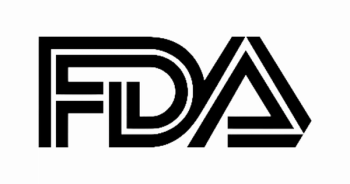
Liposomal Irinotecan Combo Added to NCCN Guideline for Pancreatic Cancer in Second-Line
Liposomal irinotecan (irinotecan liposome injection; Onivyde), fluorouracil (5-FU), and leucovorin in combination has been added to the 2016 NCCN Clinical Practice Guidelines in Oncology as a second-line treatment for patients with gemcitabine-refractory metastatic pancreatic cancer.
“Onivyde is the only FDA approved therapy available to patients whose disease has progressed after gemcitabine-based therapy and, more importantly, it addresses a critical unmet need in a patient population with very limited options,” Edward J. Stewart, head of commercial at Merrimack, said in a statement. “We believe these guidelines will further support the adoption of the Onivyde regimen as a standard-of-care in metastatic pancreatic cancer.”
The FDA approved second-line liposomal irinotecan for patients with pancreatic cancer following progression on a gemcitabine-based regimen in October 2015, based on the primary analysis of the phase III NAPOLI-1 trial. In the international trial, 417 patients with gemcitabine-refractory metastatic pancreatic adenocarcinoma were randomized to liposomal irinotecan monotherapy (n = 151), 5-FU with leucovorin (n = 149; control), or liposomal irinotecan plus 5-FU and leucovorin (n = 117).
In the control, 5-FU was administered at 2000 mg/m2 with racemic leucovorin at 200 mg/m2 weekly for 4 weeks followed by 2 weeks of rest (n = 149). In the combination arm, intravenous liposomal irinotecan was administered at 80 mg/m2 prior to 5-FU at 2400 mg/m2 and racemic leucovorin at 400 mg/m2 every 2 weeks (n = 117). In the monotherapy group, liposomal irinotecan was administered at 120 mg/m2 every 3 weeks (n = 151). Per standard irinotecan protocols, dexamethasone and a 5-HT3 antagonist could be administered in the combination arms.
In the primary analysis that was conducted after 83% events, median overall survival (OS) was 6.1 months with the liposomal irinotecan triplet compared with 4.2 months with 5-FU and leucovorin alone (unstratified HR, 0.67;P= .012). The median progression-free survival was 3.1 months for the combination compared with 1.5 months with the control (HR, 0.56; 95% CI, 0.41-0.75;P= .0001).
In an updated analysis presented during the 2016 Gastrointestinal Cancers Symposium, which was conducted after 91% of events, median OS with liposomal irinotecan, 5-FU, and leucovorin was 6.2 months compared with 4.2 months for 5-FU and leucovorin alone (unstratified HR, 0.75;P= .0417). After 12 months, 26% of patients treated with the liposomal irinotecan combination remained alive compared with 16% with 5-FU plus leucovorin alone. At approximately 20 months, survival was similar between the two groups.
The objective response rate was 7.7% versus 0.8%, for the combination and control, respectively. For those with baseline CA19-9 levels of >30 U/ml at baseline (84% in the combination arm), there was a ≥50% reduction in the marker for 29% of patients treated with the liposomal irinotecan triplet combination versus 9% in the control arm (P= .0006).
Liposomal irinotecan monotherapy did not demonstrate superior efficacy compared with 5-FU and leucovorin. In the updated analysis, median OS with monotherapy was 4.9 versus 4.2 months with 5-FU and leucovorin (HR, 1.08;P= .50). Moreover, liposomal irinotecan alone was associated with more adverse events (AEs) compared with the combination, suggesting that the drug should only be used in combination.
In patients receiving at least one dose of liposomal irinotecan, the most commonly reported grade ≥3 AEs with the combination were neutropenia (20%), fatigue (14%), diarrhea (13%), vomiting (11%), nausea (8%), asthenia (8%), and abdominal pain (7%). The rates of diarrhea were 12.8% versus 21.1% and the rates of vomiting were 11.1% versus 13.6% for the liposomal irinotecan combination versus single-agent, respectively. Additionally, febrile neutropenia occurred in 1.7% of patients in the combination arm compared with 4.1% with liposomal irinotecan monotherapy and not at all with 5-FU/leucovorin alone.
“With a significant improvement in the 12-month overall survival rate and a well-defined safety and tolerability profile, the Onivyde combination regimen is well-positioned to become the standard of care in the post-gemcitabine setting,” lead investigator Andrea Wang-Gillam, MD, PhD, from the Siteman Cancer Center and Washington University School of Medicine, St. Louis, said in a statement when the updated findings were presented. “This new therapy offers hope for extended life expectancy in a patient population with limited options.”
A phase I study is looking into liposomal irinotecan combination with cyclophosphamide for pediatric patients with solid tumors (NCT02013336). Additionally, a pilot study is exploring liposomal irinotecan biodistribution and the feasibility of ferumoxytol as a tumor-imaging agent (NCT01770353). Early results from this pilot study have shown promise for this approach.
References
- Chen L-T, Siveke JT, Wang-Gillam A, et al. Effect of baseline carbohydrate antigen 19-9 (CA19-9) level on overall survival (OS) in NAPOLI-1 trial: A phase III study of MM-398 (nal-IRI), with or without 5-fluorouracil and leucovorin (5-FU/LV), versus 5-FU/LV in metastatic pancreatic cancer (mPAC) previously treated with gemcitabine-based therapy. J Clin Oncol. 2016;34 (suppl 4S; abstr 425).
- Wang-Gillam A, Li C-P, Bodoky G, et al. Updated overall survival analysis of NAPOLI-1: Phase III study of nanoliposomal irinotecan (nal-IRI, MM-398), with or without 5-fluorouracil and leucovorin (5-FU/LV), versus 5-FU/LV in metastatic pancreatic cancer (mPAC) previously treated with gemcitabine-based therapy. J Clin Oncol. 2016;34 (suppl 4S; abstr 417).










































